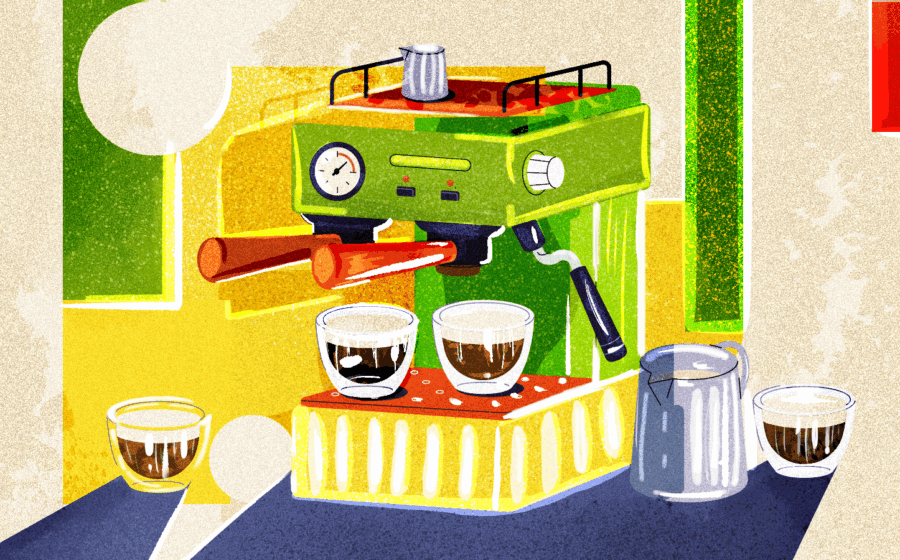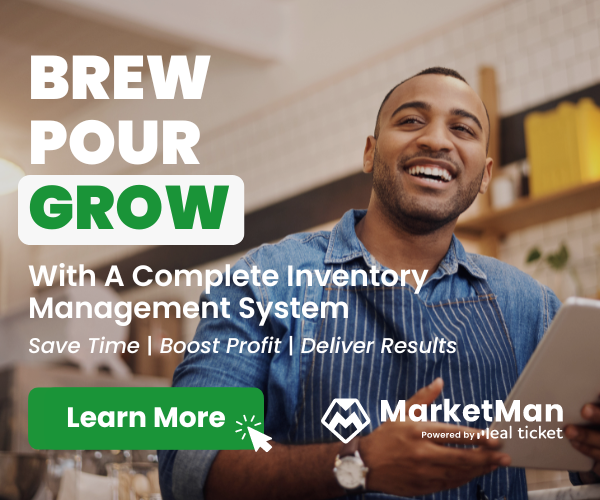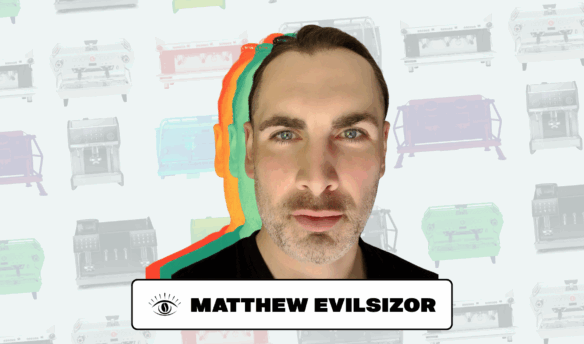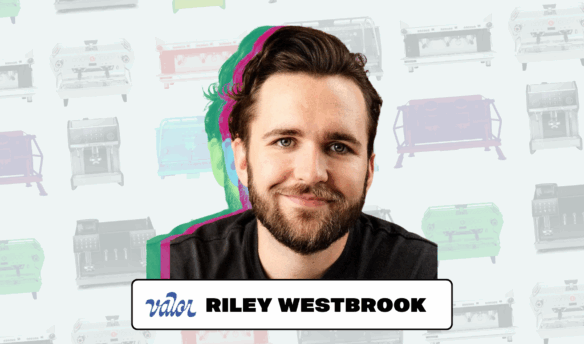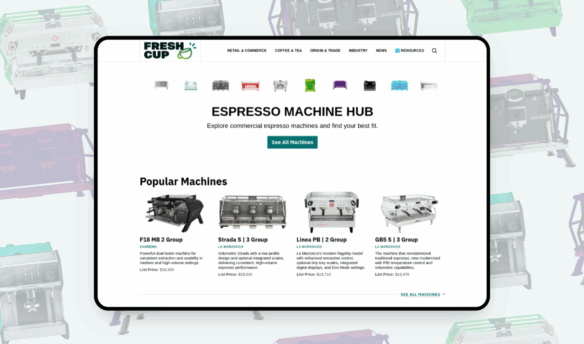For many first-time coffee shop owners, the dream of opening a cafe begins with a simple plan: buy an affordable espresso machine now and upgrade when sales take off. It’s a reasonable idea—but too often, that early bargain ends up costing far more in wasted time, inconsistent drinks, and lost customers.
Location, ambiance, product quality, and consistency all play a part in a business’s success—but not all factors matter equally. As the owner of a commercial espresso machine service company since 1998, I’ve never seen a single clear formula that guarantees success in coffee. One thing is certain, though: Equipment that runs out of steam, brews lukewarm drinks, or breaks down frequently can easily sink a business, no matter how strong its other qualities.
The truth is, your espresso machine is the backbone of your coffee business—and buying smart from day one can make all the difference.
Bet On Build Quality (and Technicians)
It’s worth knowing that some espresso machines are marketed as commercial-grade, but are not truly suited for a demanding retail environment. If an espresso machine struggles to maintain a stable temperature, your beverages will taste inconsistent—frustrating customers who expect reliability in their favorite (and hopefully daily) drinks. Anyone planning to purchase an espresso machine for a retail setting must first ensure the unit is built for consistent performance under commercial demand.
Consistent performance is often equated to specific attributes, but it is not enough to look only at features such as boiler size or temperature profiling. When it comes to espresso machines, the materials used to build the machine and the engineering behind the machine are also critical. Inferior components or a flimsy frame will lead to excessive vibrations and wear, which can cause pipes to snap or fittings to loosen—resulting in random and costly breakdowns. A machine should always have a solid frame with reinforced construction.
A memorable customer of mine built a beautiful drive-thru cafe. She stood out for her warmth and genuine passion for her business—but unfortunately, she had to contact us on the very first day of her soft opening. Typically, when you purchase a commercial espresso machine, it comes with professional installation and service support. For this passionate business owner, none of that was provided, which should have been her first clue that something was off with the machine she purchased.
Unfortunately, a solid-state relay (an electrical switching device in the machine) failed due to faulty engineering and caught fire, which left the machine irreparably damaged. She had to open her café with a used machine, and although her insurance eventually paid to replace the equipment, the incident seriously set her back in reputation and momentum.
For most buyers, it’s hard to judge the true quality of an espresso machine just by looking at it. One of the best sources for insight into build quality, reliability, and maintenance demands is your local service provider. Poor equipment design and construction don’t just impact owners—they also create challenges for service technicians, which makes them naturally motivated to help you avoid such machines. With hands-on experience across a wide range of models and manufacturers, technicians are often willing to share valuable knowledge.
That’s one of the reasons I helped develop the Espresso Service Directory. This free resource makes it easier for buyers to connect with qualified local service companies—a critical step to take before investing in equipment. Beyond build quality, there are often-overlooked features that can make or break your ability to grow.
Remember Small Features Have Big Impact
One of the key conversations I have with clients is helping them determine which type of machine makes the most sense for their cafe. In the process, I encourage them to think about the future. It’s hard to conceptualize what you’ll need from your machine in one, two, or even five years, and it can be challenging to spring for features that seem unnecessary now but which might pay dividends in the future.
For me, two important (but often overlooked) features for those who want to scale a business are shot timers and a temperature-adjustable hot water spout.
While internal shot timers might seem negligible, they spare baristas from having to time each shot themselves, helping maintain a faster, smoother workflow. Some argue that espresso machines without shot timers help baristas stay focused on the quality of each shot. But in reality, product quality stems from the professionalism and skill of the barista, not from the absence of a tool.
Internal shot timers don’t replace a barista’s judgment—they support it. They offer flexibility during busy shifts, allowing workers to engage with customers and manage other responsibilities without manually watching and timing shots. Rather than a crutch, shot timers are a smart tool that empowers baristas to do more without compromising quality.
Temperature-adjustable hot water spouts are also key. Many cafes use this espresso machine feature to clean and heat up espresso cups—which can be an issue in non-adjustable models, where the hot water spout draws from the steam boiler. This water is scalding hot and often spits and sputters as it’s being dispensed, creating a potential hazard.
Instead, look for models that include an economizer valve, which allows the water to be adjusted to a lower, more manageable temperature. This feature is not exclusively associated with high-end equipment, but is essential when considering safety.
It’s also important for efficiency. Baristas won’t need to create workarounds to negotiate the scalding water temperature, whether that’s layering cups or adding extra steps, like using ice to make Americanos and tea beverages drinkable and safe to serve. These details might sound small, but they’re important for a business that wants to grow.
A High-End Machine Is Not Always the Answer
Most reputable manufacturers make a range of espresso machines, from economical models to premium ones. Usually, you’ll see manufacturers add features that simplify brewing and give baristas better control over temperature and brewing pressure. But whether or not you need those features depends on your individual cafe’s needs.
Economical machines typically have a single boiler with most features aimed at helping baristas prepare drinks efficiently. There are good reasons to consider investing in a higher-end machine with independent brew boilers that allow for more precise temperature control. If your coffee is especially sensitive to temperature, or your location sees sustained high-volume rushes, a multi-boiler machine may be necessary for your business.
Still, many first-time buyers mistakenly believe that simply choosing a multi-boiler machine guarantees success—while overlooking equally important features that impact workflow, safety, and service quality.
For example, one business in my area invested heavily in equipment, purchasing a high-end multi-boiler espresso machine and a hot water tower to brew tea. Because of the bar layout, the tower had to be placed in the back. To save time, the owners asked baristas to use the espresso machine’s hot water spout for one-off drink orders, leaving the tower for bulk tea prep.
But while the espresso machine had the capability to dispense hot water, it did not have a valve to allow the temperature to be lowered. As a result, baristas walked to the back to use the hot water tower to prepare drinks, increasing wait times and slowing down service.
The features built into your espresso machine should support your baristas through every shift and circumstance—equipping them with the right tools directly shapes the customer experience. New businesses should never feel pressured to buy the most expensive equipment right away. Instead, thoughtful planning that considers long-term goals—and which matches the machine to those goals—is always the smarter investment.
The Expensive Mistake of Buying Twice
At the low end, a well-engineered, high-quality, two-group volumetric espresso machine will cost around $8,000, if not more. When an underperforming machine starts to hold back a growing business, ignoring the issue only creates mounting tension among staff, and prevents them from focusing fully on customers. Purchasing additional equipment requires investing well over what was originally spent, and recouping funds by selling your original machine can be difficult and uncertain.
It is difficult to tell if a machine can be resold unless evaluated by a service technician, which means if you plan to sell your existing machine, you may first need to purchase a new machine so that your current one can be evaluated for resale. Even then, attracting buyers can be difficult, and most people shopping for used equipment are looking for deals—which means you may not receive an offer that reflects your machine’s true value.
Choosing an economical espresso machine can be a smart investment, but only if it has the right features and build quality. A machine with poor temperature stability and flimsy construction can lead to inconsistent beverages, frequent breakdowns, and lost customers.While upgrading later may seem like a viable plan, reselling a used machine can be costly and difficult.
Instead, selecting a well-built, feature-rich machine from the start ensures longevity, consistency—and a smoother path to profitable, sustainable business growth.



